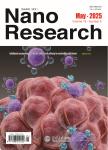版权所有:内蒙古大学图书馆 技术提供:维普资讯• 智图
内蒙古自治区呼和浩特市赛罕区大学西街235号 邮编: 010021

作者机构:School of Materials Engineering Shanghai University of Engineering Science Shanghai 201620 China Division of Physical Biology and Bioimaging Center Shanghai Synchrotron Radiation Facility CAS Key Laboratory of Interfacial Physics and Technology Shanghai Institute of Applied Physics Chinese Academy of Sciences Shanghai 201800 China Department of Endodontics Shanghai Ninth Peoples Hospital College of Stomatology Shanghai Jiao Tong University School of Medicine Shanghai 200011 China National Clinical Research Center of Oral Diseases Shanghai 200011 China Shanghai Key Laboratory of Stomatology & Shanghai Research Institute of Stomatology Shanghai 200011 China School of Chemistry and Chemical Engineering and Institute of Molecular Medicine Renji Hospital School of Medicine Shanghai Jiao Tong University Shanghai 200240 China
出 版 物:《Nano Research》 (纳米研究(英文版))
年 卷 期:2019年第12卷第2期
页 面:247-264页
核心收录:
基 金:the National Key Research and Development Program (No. 2016YFA0201200) the Shanghai Municipal Natural Science Foundation (No. 17ZR1412100) the Key Laboratory of Interfacial Physics and Technology, the Chinese Academy of Sciences (No. CASKL-IPT1603) the Talent Program of Shanghai University of Engineering Science, the Startup Foundation for Doctors of Shanghai University of Engineering Science, and the National Natural Science Foundation of China (Nos. 81870749, 21373260, 31470960 and 51375294)
主 题:graphene-based nanomaterials toxicology and biocompatibility biomacromolecules cells living entitles applications
摘 要:Graphene-based nanomaterials have emerged as a novel type of materials with exceptional physicochemical properties and numerous applications in various areas. In this review, we summarize recent advances in studying interactions between graphene and biosystems. We first provide a brief introduction on graphene and its derivatives, and then discuss on the toxicology and biocompatibility of graphene, including the extracellular interactions between graphene and biomacromolecules, cellular studies of graphene, and in vivo toxicological effects. Next, we focus on various graphene-based practical applications in antibacterial materials, wound addressing, drug delivery, and water *** finally present perspectives on challenges and future developments in these exciting fields.